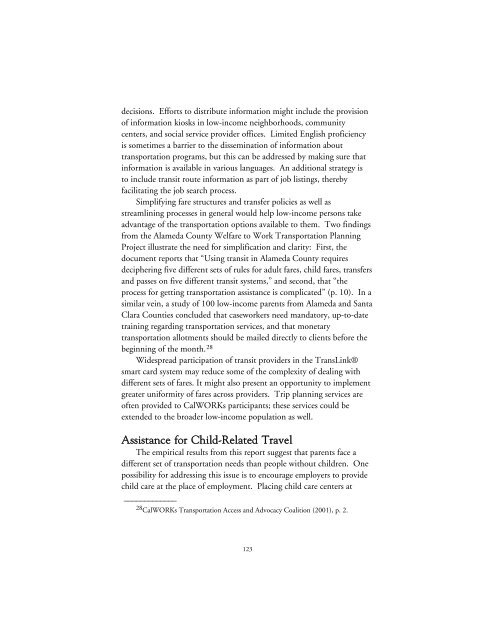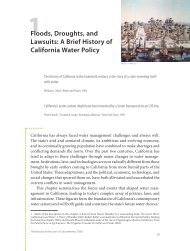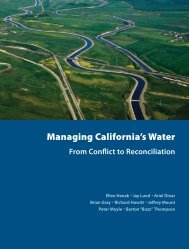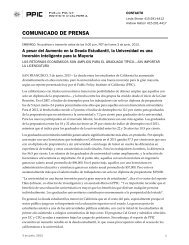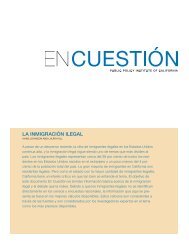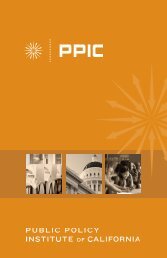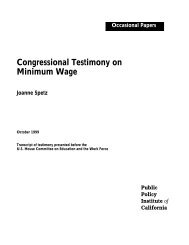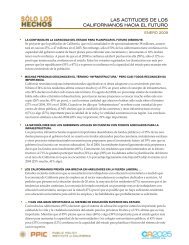Transportation Spending by Low-Income California Households ...
Transportation Spending by Low-Income California Households ...
Transportation Spending by Low-Income California Households ...
Create successful ePaper yourself
Turn your PDF publications into a flip-book with our unique Google optimized e-Paper software.
decisions. Efforts to distribute information might include the provision<br />
of information kiosks in low-income neighborhoods, community<br />
centers, and social service provider offices. Limited English proficiency<br />
is sometimes a barrier to the dissemination of information about<br />
transportation programs, but this can be addressed <strong>by</strong> making sure that<br />
information is available in various languages. An additional strategy is<br />
to include transit route information as part of job listings, there<strong>by</strong><br />
facilitating the job search process.<br />
Simplifying fare structures and transfer policies as well as<br />
streamlining processes in general would help low-income persons take<br />
advantage of the transportation options available to them. Two findings<br />
from the Alameda County Welfare to Work <strong>Transportation</strong> Planning<br />
Project illustrate the need for simplification and clarity: First, the<br />
document reports that “Using transit in Alameda County requires<br />
deciphering five different sets of rules for adult fares, child fares, transfers<br />
and passes on five different transit systems,” and second, that “the<br />
process for getting transportation assistance is complicated” (p. 10). In a<br />
similar vein, a study of 100 low-income parents from Alameda and Santa<br />
Clara Counties concluded that caseworkers need mandatory, up-to-date<br />
training regarding transportation services, and that monetary<br />
transportation allotments should be mailed directly to clients before the<br />
beginning of the month. 28<br />
Widespread participation of transit providers in the TransLink®<br />
smart card system may reduce some of the complexity of dealing with<br />
different sets of fares. It might also present an opportunity to implement<br />
greater uniformity of fares across providers. Trip planning services are<br />
often provided to CalWORKs participants; these services could be<br />
extended to the broader low-income population as well.<br />
Assistance for Child-Related Travel<br />
The empirical results from this report suggest that parents face a<br />
different set of transportation needs than people without children. One<br />
possibility for addressing this issue is to encourage employers to provide<br />
child care at the place of employment. Placing child care centers at<br />
_____________<br />
28 CalWORKs <strong>Transportation</strong> Access and Advocacy Coalition (2001), p. 2.<br />
123


